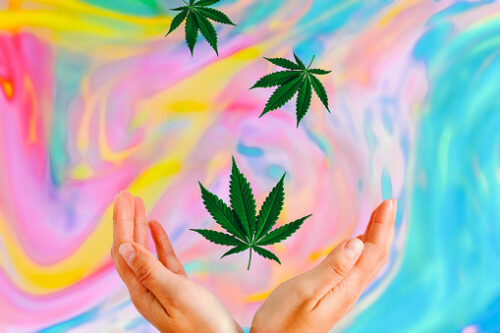Cannabis has been used in performance art for centuries, dating back to the early days of the counterculture movement. In the 1960s and 1970s, performance artists such as Andy Warhol and Marina Abramović used cannabis to explore the relationship between art and consciousness.
Warhol’s 1966 film “Chelsea Girls” features scenes of the artist and his friends smoking marijuana. The film was shot in real time, and it captures the relaxed and playful atmosphere of the Chelsea Hotel, where Warhol and his collaborators lived and worked.
Abramović’s 1974 performance piece “Rhythm 0” involved her inviting the audience to interact with her in any way they desired. The piece was controversial, as some audience members took advantage of Abramović’s vulnerability and subjected her to physical and emotional abuse. However, the piece also highlighted the power of performance art to challenge social norms and explore the limits of human endurance.
In recent years, there has been a renewed interest in the use of cannabis in performance art. This is due in part to the growing acceptance of cannabis use in many countries. Artists are now freer to explore the plant’s potential without fear of legal repercussions and every day more people are planning to grow marijuana at home..
One of the most notable examples of recent cannabis-inspired performance art is “Smokers” by Mark Bradford. The piece is a large-scale installation that features a room filled with smoke from burning marijuana. The smoke creates a hazy atmosphere that envelops the viewer and creates a sense of disorientation.
Bradford’s piece is a meditation on the effects of cannabis on perception and consciousness. The smoke obscures the viewer’s vision, but it also opens up new possibilities for seeing and experiencing the world. The piece challenges the viewer to question their assumptions about reality and to explore the potential of cannabis to expand the mind.
Another recent example of cannabis-inspired performance art is “The Weed Goddess” by Laurie Cooper. The piece is a performance piece that features Cooper dressed as a cannabis goddess. She dances and sings to the audience, and she encourages them to smoke marijuana and join her in a celebration of the plant.
Cooper’s piece is a celebration of cannabis culture and its potential to bring people together. The piece is also a political statement, as it challenges the negative stereotypes that are often associated with cannabis use.
The use of cannabis in performance art is a growing trend. As cannabis becomes more accepted, we can expect to see even more creative and innovative work that explores the plant’s many possibilities.
The Effects of Cannabis on Performance
The effects of cannabis on performance can vary depending on the individual and the amount of cannabis consumed. However, in general, cannabis can have both positive and negative effects on performance.
On the positive side, cannabis can help to relax and focus the mind. This can be beneficial for certain types of performance, such as music and dance. Cannabis can also help to reduce anxiety and improve creativity.
On the negative side, cannabis can impair coordination and judgment. This can be a problem for certain types of performance, such as driving or operating machinery. Cannabis can also make it difficult to concentrate and remember information.
Ultimately, the decision of whether or not to use cannabis before a performance is a personal one. There is no right or wrong answer, and the best decision will vary depending on the individual and the circumstances.
Conclusion
Cannabis has a long and varied history in performance art. Artists have used the plant to explore a wide range of themes, from consciousness and spirituality to politics and social commentary. As cannabis becomes more accepted, we can expect to see even more creative and innovative work that explores the plant’s many possibilities.



{ 1 comment… read it below or add one }
Great post! The relationship between cannabis and performance art is multifaceted, encompassing creativity, politics, spirituality, and societal critique. Artists continue to push boundaries, challenging perceptions and sparking important conversations through their innovative and often daring use of this substance in their work.